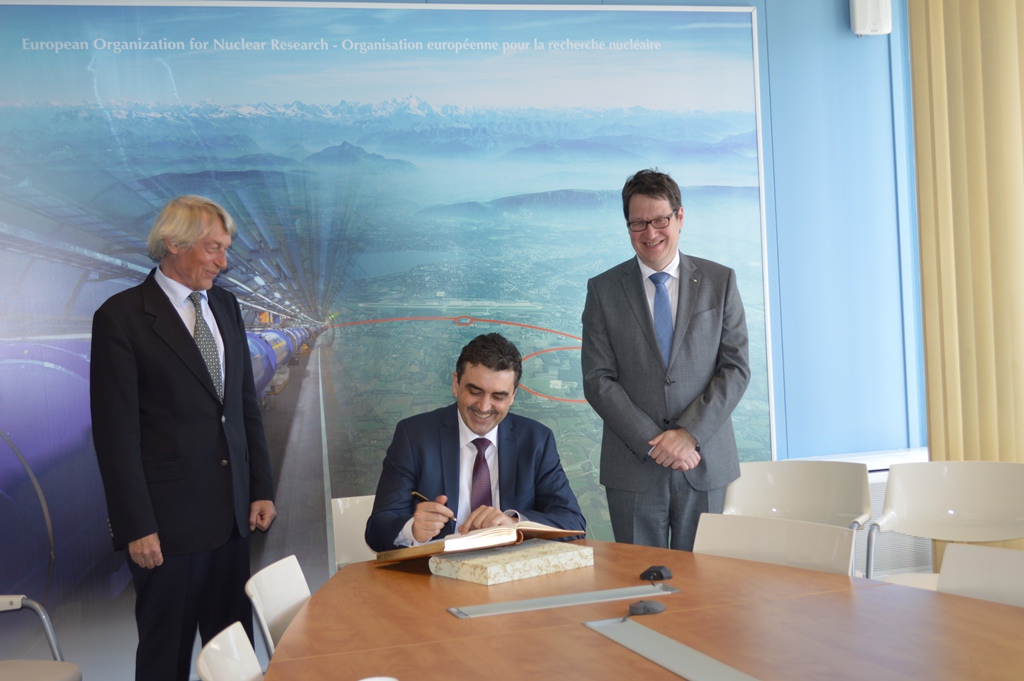Rector Eduard Galazhinsky, Vice-Rector for International Affairs Artyom Rykun, and Alexander Khodinov, head of the TSU research group at the ATLAS collaboration, visited the European Center for Nuclear Research (CERN). During the visit, the university representatives met with Karl Jacobs, head of the ATLAS collaboration, and CERN employees Tadeusz Kurtika and Christophe Schaeffer and discussed collaboration in IT and organization of internships for students and university staff.

At ATLAS, the TSU team studied the decay processes of the Higgs boson into two muons (an unstable elementary particle) and carried out work on the operation and modernization of the ATLAS muon spectrometer. For this purpose, microelectronics were created, and methods for the comprehensive verification of unique microcircuits for new detectors were developed. The TSU team plans to create a so-called space booth, an infrastructure for complex testing of whole sectors from muon chambers with the help of cosmic rays on the ground before they are installed in the experimental zone.
Now, TSU radiation-resistant detectors are installed at the Large Hadron Collider (LHC) at CERN. They proved to be much more stable than the previous ones, because they were made not from traditional silicon but from gallium arsenide and manufactured using a special technology. Detectors are used for the ATLAS experiment whose purpose is to search for superheavy elementary particles, such as the Higgs boson.
]In 2016 TSU became the first in 24 years new participant from Russia with the right to vote in the largest project of CERN. The University became a full member of the ATLAS collaboration at the Large Hadron Collider at CERN and entered the muon project ATLAS.
TSU announces a competition for a trip to CERN for work on the ATLAS project. Students (Faculty of Applied Mathematics and Cybernetics, Faculty of Physics and Engineering, Faculty of Radiophysics, Faculty of Informatics, Faculty of Physics, Faculty of Mechanics and Mathematics, and Faculty of Innovative Technologies) of the 4th year of undergraduate studies, Master’s students, graduate students, and young scientists (researchers, who have had a defense in the past five years) are invited to participate.

